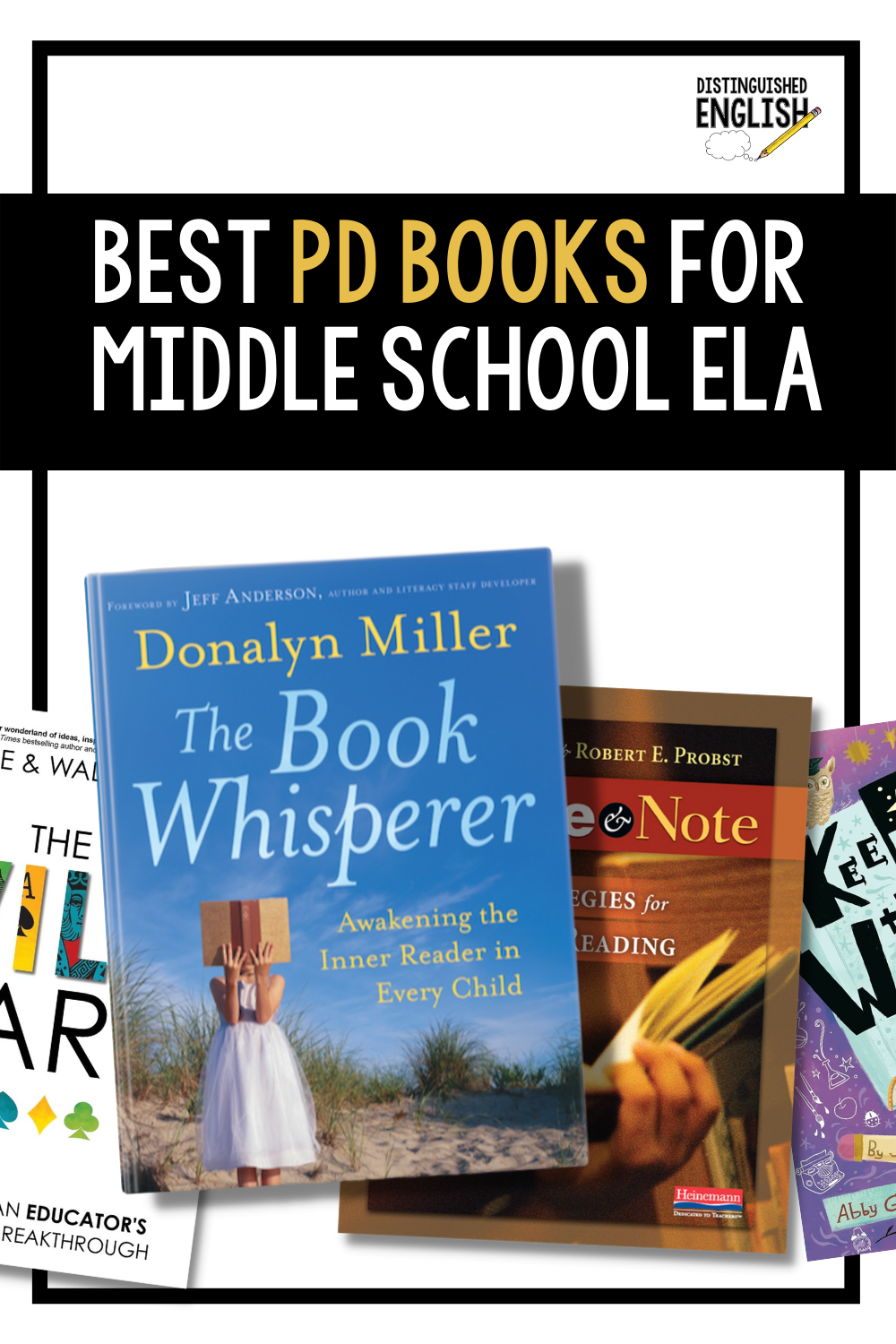Best Professional Development Books for Middle School ELA
If you remember the time I stink-bombed a student with a rotten egg, you probably already know that I love to read PD books and incorporate new ideas in my middle-school literature classroom. Do new ideas always go as planned? No way! Just ask the kid who had to wash rotten egg out of his nose in the shower. But I will never be satisfied doing things the way they’ve always been done. And because these books have encouraged me to take risks and make bold choices, I have become a better, kinder, more creative, more effective teacher. Here are my top 5 PD books for middle-school ELA:
The Book Whisperer, by Donalynn Miller
I wouldn’t be the teacher I am today if I hadn’t read this book five years ago. Donalyn Miller explains the importance of choice reading in the classroom and promotes a culture of reading in the classroom. After I read The Book Whisperer, I had so many parents tell me their kids had hated reading before they came to my class. I LIVE for those moments! The only thing that still puzzled me was how to get rid of my whole-class novel studies for good . . . and this brings me to the next book.
Notice and Note, by Kylene Beers and Robert E. Probst
Beers and Probst changed my life. I know that sounds dramatic, but this book was the breakthrough I needed to put reading strategies at the center of everything we do in my classroom. The book is broken into six different things students should look for (or notice) when they read. These six things are called signposts, and each time a student finds a signpost, they ask themselves questions about what they read. I have a drumset in my classroom, so I help my students memorize the six questions by hosting dance parties during class. We stand on our chairs, dance, and chant the six signpost questions over and over. And it WORKS. I point out signposts in our read-alouds and model how to ask and answer the questions; the students practice finding signposts and answering questions in the books they chose to read. Finally! My class is structured with student’s reading at the center.
Notice and Note: Nonfiction, by Kylene Beers and Robert E. Probst
The concept is the same as the last book, but I can’t leave this one out. Our standardized testing shows that my students need extra practice with nonfiction texts, and with these reading strategies, students can get the support they need while reading texts that actually interest them.
The Wild Card, by Hope and Wade King
This is the book that encouraged me to bring my husband’s drumset into my classroom and smuggle rotten duck eggs onto campus. Even more importantly, this is the book that inspires me to take more risks and be unapologetically myself. Hope and Wade King, former teachers at The Ron Clark Academy, share how to use your uniqueness to capture students’ attention and make learning last.
Keeping the Wonder, by Abby Gross And Staci Lamb, Ashley Bible, and Jenna Copper
I took an online workshop from these ladies a couple of summers ago, and I was so blown away by their practical, implement-today ideas that I bought their book as soon as it was published. Everything they suggest is just so easy, but it gets my students’ attention and makes our classroom a more fun and engaging place to be.
These books have made such a positive difference in my classroom, and I hope they do the same for you!

